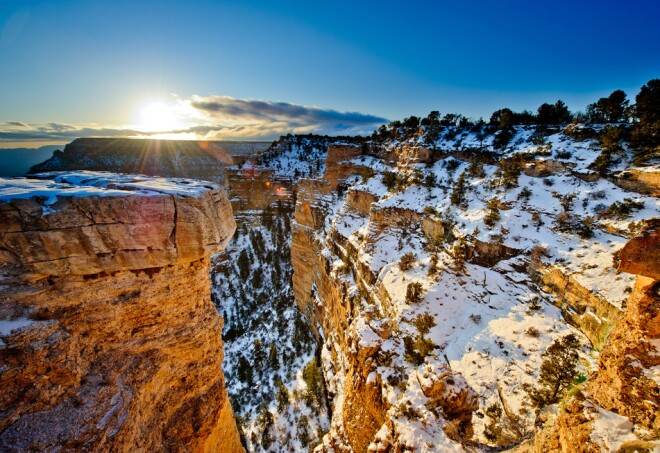Overview
Can’t miss things to do in Budapest
The best way to experience Budapest is on foot, with plenty of espresso breaks, as you admire the city’s most notable buildings and charming neighborhoods. Start with a walk through Buda Castle, then head down one of the staircases and toward the Danube. Cross the Széchenyi Chain Bridge to get to the heart of Pest and continue walking north along the river to see the Shoes on the Danube Promenade Holocaust memorial and the neo-Gothic Parliament—Hungary’s largest building. Afterward, circle back south through Szabadság Tér Park to St. Stephen’s Basilica, where you can climb to the dome for a beautiful view. Then, walk up tree-lined Andrássy út to see the Opera House, as well as plenty of old villas and cafés. End at Heroes’ Square and City Park, which are among the city’s top sights.
Food and drink to try in Budapest
There’s much more to Hungarian cuisine than heavy paprika and gulyás (the country’s most famous soup). In Budapest’s traditional restaurants, you’ll find an array of soups, entrees like chicken paprikás and pörkölt (meat stew), and desserts like strudel and the crêpe-like palacsinta. The city’s dining scene has diversified in recent years, however, and now visitors can also look forward to lighter, more modern renditions of Hungarian cuisine. When it comes to drinking, Hungarian wine is not widely available elsewhere, so oenophiles will have lots of new varietals to sample, including indigenous reds such as kadarka and the sweet Tokaj aszús.
Culture in Budapest
From the ruin bars that bring life to derelict buildings and the murals that brighten up unsightly 7th district walls, to the often hard-to-find galleries and small design shops, Budapest is a mix of old and new. For a taste of the city’s art scene, visit galleries like Kisterem, Telep, and Chimera-Project, or head to the Ludwig Museum of Contemporary Art. Hungarians are also extremely proud of their musical heritage, which includes past geniuses like Bartók, Kodály, and Liszt as well as present luminaries like Márta Sebestyén, Iván Fischer, and András Schiff. Catch a performance at the renovated Franz Liszt Academy of Music, the Hungarian State Opera House, or Müpa. Alternatively, you could enjoy local acts at Budapest Jazz Club, see a concert aboard the A38 ship docked on the Buda side of the river, or spend the evening at a táncház (dance house), where patrons dance to live folk bands. In August, Budapest even hosts one of Europe’s most popular pop and rock music festivals, Sziget.
Shopping
From local fashion to prized antiques, Budapest offers lots of unique things to bring home. WAMP, the monthly (or sometimes more regular) design market, is worth visiting to find the city’s best designers all in one place. For antiques, do some treasure hunting at the sprawling Ecseri Piac, located on the outskirts of the city. Also worth visiting is Falk Miksa utca, Budapest’s antiques area near Parliament, where the streets are lined with high-end antique shops, contemporary art galleries, and a few shops selling Hungarian folk art. Of course, a trip to Budapest isn’t complete without a stop at Central Market Hall, famous for both its architecture and range of edible souvenirs.
How to get around Budapest
While there are few flights direct to Budapest from the United States, it is easy to connect to it through Vienna and other European hubs. From the airport to the city center is a journey of 30 to 45 minutes, with a choice of public buses, somewhat faster private shuttles, taxis, and a train that ends at Nyugati station, in the heart of Pest.
Central Budapest is compact enough that you can explore much of it on foot, though there is also a limited though reliable subway network—it is Europe’s second oldest metro system (only London’s has been operating for longer). The bike share system is, for now at least, best avoided with too many visitors reporting problems, including difficulty getting their deposits returned. At the same time, a number of taxi companies have earned their unsavory reputations. If you require a car, ask your hotel or the restaurant you are dining at to recommend a trusted service.
When’s the best time to go to Budapest?
Autumn is perhaps the ideal time to visit Budapest, with both long sunny days that can feel like an extended summer as well as others when there is a welcome crispness. In July and August, the outdoor cafés and bars are buzzing, though visitors should expect some days that border on uncomfortably hot and humid. Winter and spring offer off-season values, and a warm bowl of goulash or a soak in hot thermal bath are arguably even more memorable if it is cold and gray outside.
Practical Information
- Visas are not required for visits up to 90 days for U.S., Canadian, Australian, and EU citizens.
- All flights land at Budapest’s Ferenc Liszt International Airport (BUD).
- The public transportation system is extensive and convenient.
- The language is Hungarian; the currency is the Hungarian forint.
- It’s standard to tip 10% in restaurants and for services.
- Electricity is 220 volts.
Local Resources
- Time Out Budapest is a good resource for events and new restaurant and bar openings.
- The Budapest Times is an English-language publication and website with both news and cultural coverage.
- The Yellow Zebra Bookstore, popular with both expats and visitors, stocks second-hand English-language books, and also has a café and bike rental which offers city tours.
Guide Editor
Kimberly Bradley is an American writer living in Berlin and Vienna. Read her writings on travel and culture at kimberly-bradley.com.








